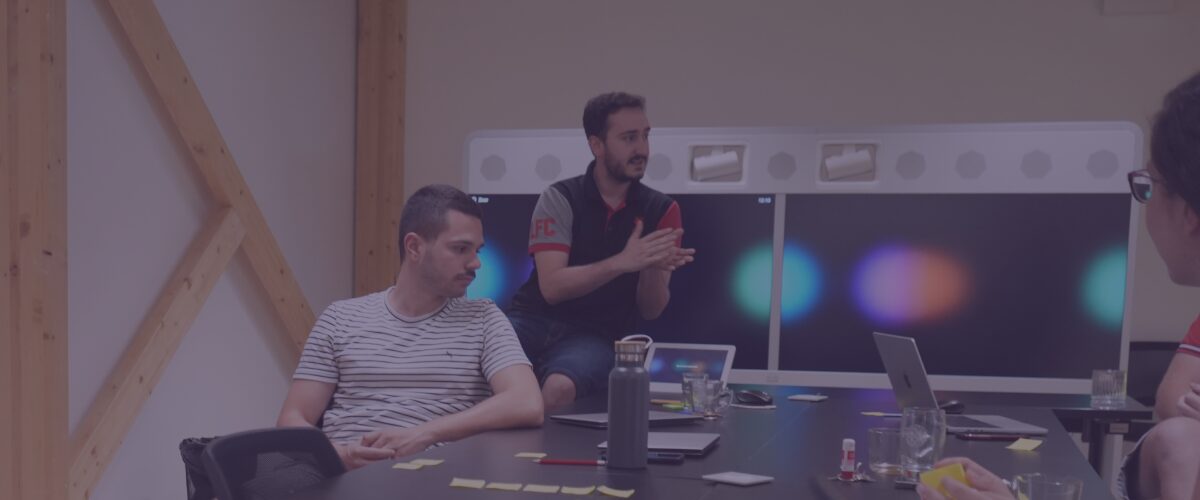
The need for efficient and customizable business solutions has never been higher. Still, non-IT companies often lack the development resources to create them.
Relying on years of experience in designing and implementing information management systems for such businesses, company Unitfly decided to build its own low-code platform – Auclio.
We spoke with Ivan Marković, CEO of Unitfly.
1. Can you kick things off by telling us what Unitfly does? What sets your company apart?
At Unitfly, we help companies improve their business operations by implementing solutions in the area of document and business management. But what we actually do is helping knowledge workers to work smarter. To do so, we have decided to work with the best vendors in the market, including Microsoft and M-Files, but we also do our product development. This enables us to enrich existing solutions or create new value for our customers.
What sets Unitfly apart is the fact that we are not only technology vendor or a “technology company”, but we are more “business consulting and technology company”. Our main goal is to solve our customers’ business needs and deliver solutions that bring real business value.
We offer services that help us identify the challenges customers face. Once we understand their business and specific demands, we propose the best solution by combining both professional services and product development. This way, products are developed based on real needs, which is the basic principle of product development. This approach allows us to gather the requirements and translate them into the desired solutions.
2. What initially inspired you to develop your own low-code/ no-code platform, Auclio? Was there a specific moment or challenge that highlighted the need for such a tool?
Unitfly has been doing product development since the beginning. We soon realized that we would have to enrich existing platforms to satisfy all the customer needs and provide full value. Over the years, we have developed different add-ons that help us implement the best technology solution for our customers.
The same happened with Auclio. While providing professional services and trying to create the best solution for customers, we realized that there are some gaps in the market. We wanted a solution that could seamlessly integrate data from various enterprise software like SAP, Microsoft, M-Files or others, while also being highly customizable from the user’s perspective.
Enterprise solutions often offer a lot of functionalities for building complex business applications, but they lack flexibility when it comes to user interface and experience. That’s why we created Auclio – to offer connectors towards different systems on one side, and a user-friendly, customizable experience on the other.
3. How did you and your team approach the development of Auclio? What was your biggest challenge so far?
Given our experience in product development, we were fully aware of the complexity involved in building a low-code/no-code solution. It’s very complex in a sense that you are not only solving one particular business problem, but you have to create a solution that is flexible and adaptable for different customer needs, company sizes and industries.
The challenge was to design a system that provides an intuitive user interface for end-users, but also to build a backend that’s easy for solution administrators to understand and to be able to configure it according to their needs.
When you’re developing a solution capable of integrating with various enterprise systems, you must consider the overall architecture and how it will adapt to future changes in those systems. We had to gain a deep understanding of different systems, their integration methods and data models. The real challenge was fitting all this into a cohesive framework within our solution.

4. There are numerous low-code/no-code platforms available today. What differentiates Auclio from other similar tools on the market?
The existing low-code market offers platforms that are either more low-code or no-code solutions. No-code solutions provide intuitive and simple interfaces that are created with users in mind, allowing them to make changes easily.
On the other hand, low-code platforms give you an option to do more complex data manipulation operations and system integrations, which allows you to create very complex enterprise software.
With Auclio, we wanted to combine the best of both worlds. It offers the simplicity and usability of a no-code solution, while providing the robust functionality of a low-code platform. This means that users can create complex enterprise solutions with all the important functionality of the low-code solutions, without compromising on user experience.
5. Can you share some examples of how your clients are using Auclio? What kind of feedback have you received so far?
Our customers have been very pleased with Auclio. From the feedback we’ve received, end-users appreciate the intuitive interface and overall usability of the platform, they like the overall product we delivered. It makes their day-to-day tasks easier. This is precisely the goal of any enterprise solution – to simplify daily operations.
System administrators and IT teams like Auclio’s ability to quickly adapt to changing user demands. They also value its comprehensive monitoring capabilities. It is crucial for them to ensure that system works in a way that it should, that work is stored safely and that solution works as expected performance-wise.
Clients are using Auclio for various solutions, typically combining it with document management solution for some business processes that are document-heavy. For example, some clients use Auclio for project management or contract management, integrating data from different sources like SAP or custom-developed ERP systems with M-Files for document management. Auclio provides users with a single interface to access all the information they need, eliminating the need to navigate multiple systems and interfaces.
6. Looking forward, what are your plans for Auclio’s future development? You’re planning to add a generative AI module to Auclio. How do you think this feature will change the way users create business applications?
We are now working on implementation of the UI framework which would allow us to have a great user experience from anywhere.Other than that, we are investing time on research and understanding on how the power users or system administrators prefer to configure Auclio. We currently play with some proof of concept implementations. Our goal is to develop a solution that offers maximum flexibility and adaptability.
Of course, we’re also working on adding more integrations with other systems to expand Auclio’s capabilities.
And about generative AI – it would allow users to write requests in everyday, human language, which AI can then translate into machine-understandable instructions, enabling the configuration of the solution based on user input. This approach will significantly reduce the time needed to create and adapt solutions. Users won’t need to learn complex interfaces – everything will be managed through a chat-based interface.
7. For companies considering adopting a low-code/ no-code platform like Auclio, what advice would you give them? How should they approach integrating it into their operations?
I would say that the approach to implementing a low-code/ no-code platform should be similar to implementing any other enterprise software.
First and foremost, you need to investigate and understand the internal business processes you want to improve. Try to think about processes from the perspective of optimization and try to simplify steps. Gather all the end-user requirements and then translate them into the software requirements.
Once you have a clear set of software requirements, that’s where Auclio comes in. Instead of spending a lot of time and money on custom development or implementing solutions that might not be fully aligned with your needs, you can quickly create a minimum viable product with Auclio. Present this to your end-users, gather their feedback, and iteratively improve the solution. This iterative approach is a significant advantage of using Auclio compared to custom-developed solutions.



